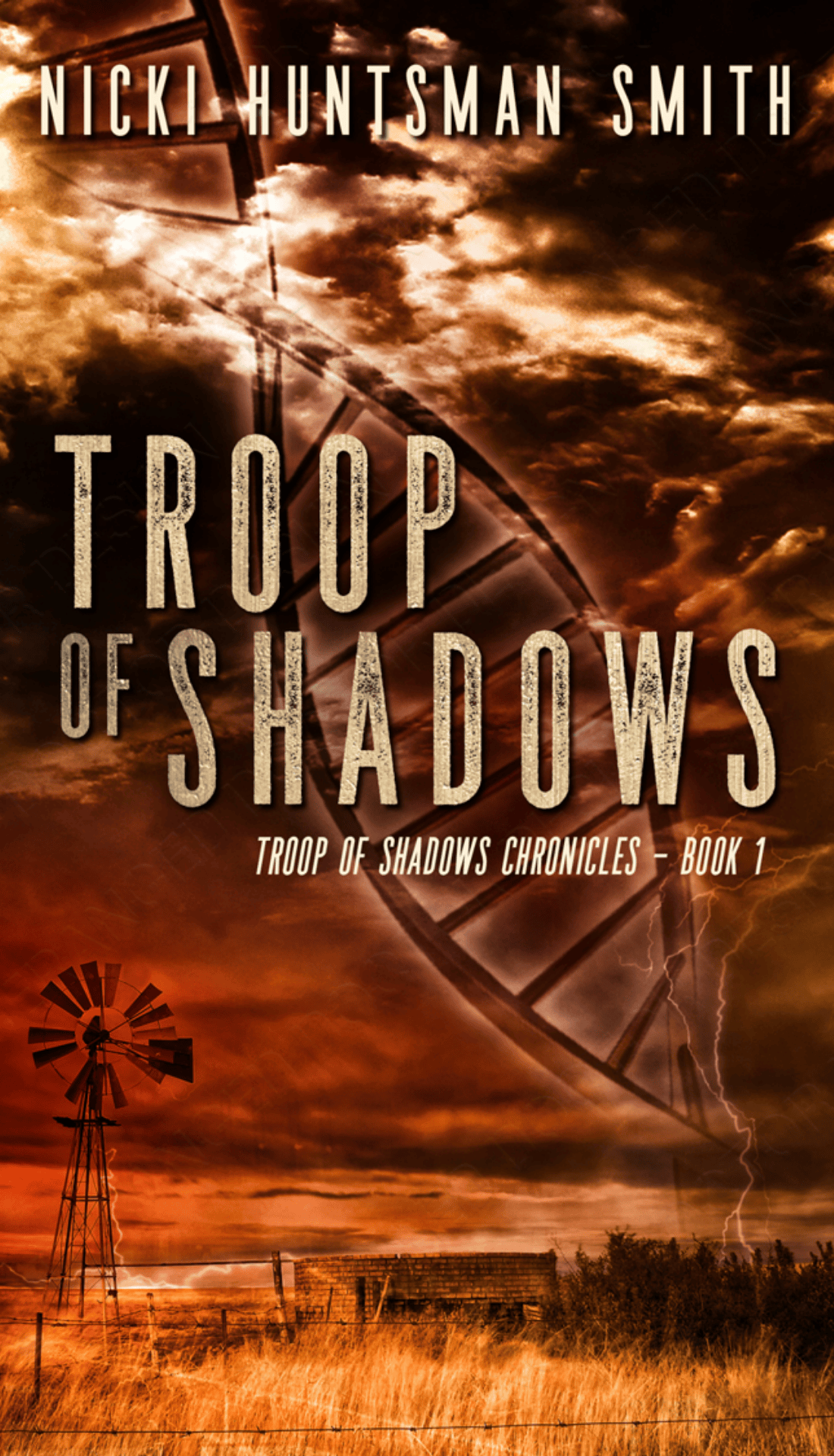
Troop of Shadows
Book 1 in The Troop of Shadows Chronicles Series
“This is one of the best apocalypse series I’ve ever read!” -Amazon Review
A pandemic of unknown origin wipes out 99% of the population.
No electricity. No technology. The world spirals into chaos.
But Dani was better prepared for chaos than most. As the sickness spread, she scoured every bookstore and library in reach, accumulating a vast arsenal of survival knowledge from the literature she found.
Despite the recent horrors, she has come into her own at last. She is no longer a twenty one year old smart kid with a dumb job meandering through life. When not studying, she and her friend Sam spent endless hours practicing self defense along with the lethal training of Krav Maga. She has strengthened her mind and her body. She is a fighter now… a good one.
Good but not good enough to defeat a psychopath with an army searching for her and Sam. The leader has assured them that, once captured, their deaths will be slow and painful.
Formats Available on Amazon:
I thoroughly enjoyed reading Troop of Shadows! Excellent plot, fantastic writing and the best character development I have ever seen. I purposely paced myself so as not to finish it too quickly. Do yourself a favor and start reading immediately!
…Actually, to be honest, this is the second time I’ve read it (and I’ll be going on to the others as well). And why? Because I like the story, obviously but, more, I really love the characters — all different, well-drawn, complete characters done in such a way that one is able to keep track of who each of them are — which is not always easy with multi-story, multi-character novels. Each of the individual stories are interwoven in ways that feel natural, and yet, a bit mystical which it just might be the point. Something is different about these catastrophe survivors. Wanting to know what that might be will keep you reading. Don’t pass this one up.
Easy read and tough to put down. I loved it and now my older son is reading it and is enjoying it. I plan to purchase the full set of books. Seems to be written for the silver screen and that’s OK. If done right could be a fantastic TV series or movie with sequels…but let’s finish the full series of books first. Good stuff.
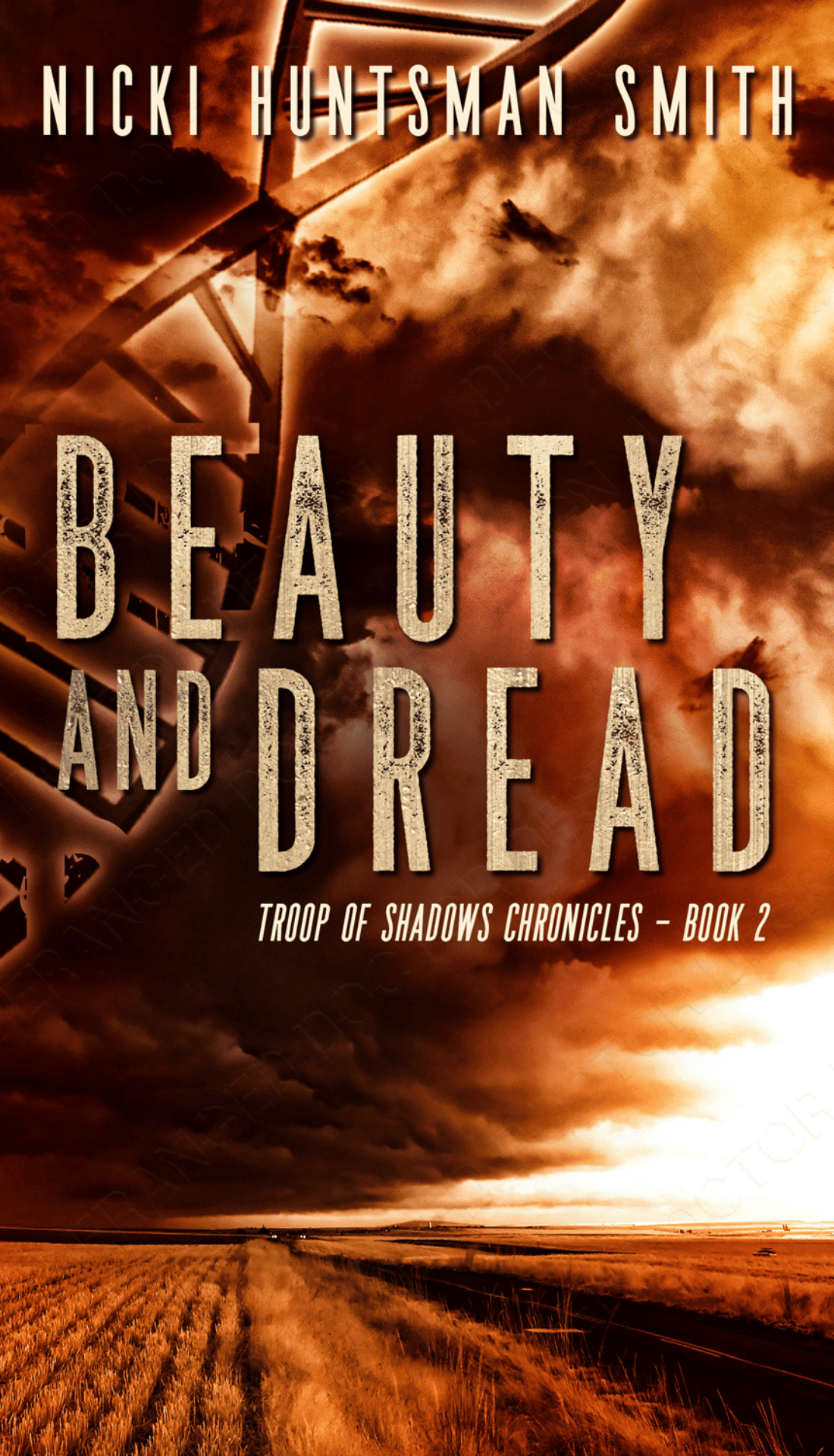
Beauty and Dread
Book 2 in The Troop of Shadows Chronicles
Picking up immediately where the first book in the series ended, Beauty and Dread continues the saga of a small group of extraordinary people.
Their unique genetic code allowed them to survive a devastating global pandemic. Now they must continue to fight for their lives, their humanity, and their town’s enviable progress toward rebooting civilization.
The tiny population of Liberty, Kansas, has weathered disease, starvation, marauders from without, and dissension from within. Still, it is a shining star of hope in an otherwise bleak and desolate land.
But a madman approaches with an army at his heels, spurred by blood-lust and fantasies of revenge.
Will he prevail, usurping the town and murdering its citizens? Or will this eclectic group of geniuses and misfits fight back?
Intricately plotted, superbly paced, and brought to life by fully-developed protagonists, quirky supporting characters, and charming villains, the Troop of Shadows Chronicles is a tour de force. It is the unfolding story of the greatest threat humankind has ever faced and is populated with some of the most entertaining people you’ll ever meet.
He has been grappling with monsters far longer than anyone else, and he knows one truth better than anyone: The only good monster is a dead monster.
Formats Available on Amazon:
This book was frustrating, enthralling, filled with suspense, and downright entertaining. There were twists I never imagined, but they all made sense. I highly recommend it.
This series is impossible to set aside. Good versus evil in shades of grey yet there remains hope and happiness in the midst of it all. A plague that took much of the world’s population and yet gifted many of the survivors with talents, extreme intellegence, and paranormal abilities even as it magnified and exacerbated neuroses and psychosis to a deadly degree in others. Watching over all this and humanity itself is an ancient gifted race ready to end humanity to tally if they cannot conquer their new abilities…Fascinating!
Gripping story line full of likeable characters . Some really awful characters you love to hate and wish them a seriously gruesome death . A well written story.
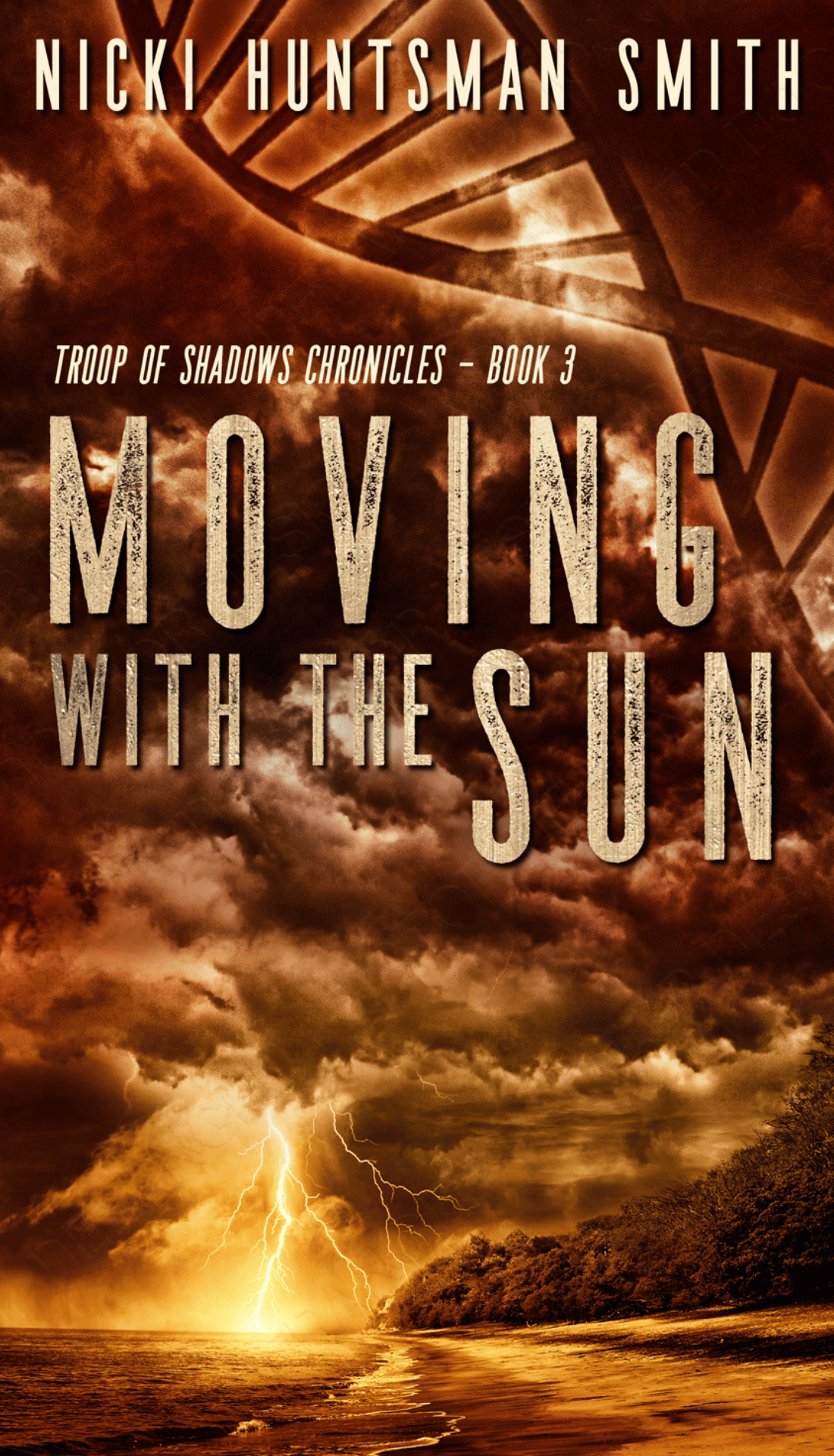
Moving with the Sun
Book 3 in The Troop of Shadows Chronicles
You’re one of the lucky ones – you lived through the global pandemic that eradicated seven billion people. You survived civilization’s collapse and the unspeakable atrocities committed by desperate people. Now it’s two years later…and you’re still alive.So are two intriguing groups of survivors living in close proximity on the Florida coast. The first, a harmonious community of highly intelligent people who reside on a former island paradise; they are determined to create sustainable quality of life. The other, camping in a Costco warehouse on the nearby mainland, a ruthless tribe of organized raiders who will stop at nothing to provide for their own.Not only must they endure hardships and hunger in their ravaged world, fate seems hell bent to crush them all as a monster hurricane seethes in the Atlantic. Fans of Stephen King’s “The Stand” will love these novels. Intricately plotted, superbly paced, and brought to life by fully-developed protagonists, quirky supporting characters (some you will recognize from the previous books), and charming villains, the Troop of Shadows Chronicles is a tour de force. It is the unfolding story of the greatest threat humanity has ever faced, and is populated with some of the most entertaining people you will ever meet.
Formats Available on Amazon:
A unique and totally absorbing apocalyptic saga with many differences from standard tales… All the action is watched over by an ancient race of ” people ” who are reluctant to intervene unless necessity requires the complete removal of the human race yet again. This series is totally enthralling and I am onto the next without pause! Character development is superlative!
This book surprises me – it
approaches the breakdown of
civilization via plague in a different way than any other book I’ve read so far. The story is told through the eyes of various members of the group so it bounces from person to person and it works well. Each character is so memorable that it is easy to remember who they are and see them in your mind’s eye.
It’s not just a plague/ supernatural/ Armageddon/ Doomsday Prepper book; it’s the best book I’ve read in a long time. Read them all if you get a chance !!
Brilliant series – gutted there are no more currently available. Apocalyptic/post apocalyptic series with a difference which made it very enjoyable to read. Seriously hope there are more as would like to know how all the characters from book 1 onwards are doing, as well as new characters that we have yet to meet.
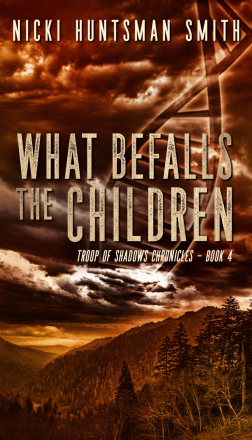
What Befalls the Children
Book 4 in The Troop of Shadows Chronicles
What has Fergus gotten himself into this time?
The residents of Whitaker Holler, nestled in the Tennessee Smoky Mountains, possess the gene (engineered millennia ago) that saved them from perishing during a catastrophic global pandemic three years earlier. They’re lucky. They knew all about rustic living before the apocalypse.
Led by Serena Jo, a brilliant, determined woman who doesn’t hesitate when making impossible, even ruthless decisions about their survival, the Mountain People thrive in this newly primitive world.Two diverse residents of a secret government warehouse (one of the nation’s seven ‘Strategic National Stockpiles’) camouflaged within a self-storage complex a few miles from Whitaker Holler also survived the pandemic.
Ray, the facility’s former brainy but phobia-plagued supervisor must accommodate his captive, a malevolent psychopath bent on murdering every human she encounters. Ray knows keeping the survivors safe from Lizzy, despite the toll she takes on his peace of mind, is the most important and dangerous job left in the world.
What if he fails?
Formats Available on Amazon:
Good twists and turns. Apocalypse combined with fantastical 🧪 science fiction! Be still my heart. The best combo ever. Enhanced with murder mystery thriller romance and heart jerking attachment to characters that aren’t even that loveable sometimes!
Binging to the next Book!
Following this author
It’s been a long long time since I’ve found a series of books I can’t put down yet don’t want to end. I was leery of being able to enjoy the second book after enjoying the first one so much. Book two just made me anxious to start the third. Now on to Book Four!
Thank you Nicki Huntsman Smith¡!
New group of strong dynamic characters broadens the common theme very effectively. Consistent developing action keeps you glued to the story long after I should have put it down for the night!
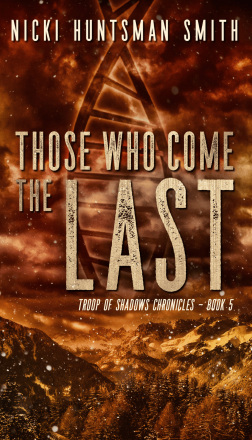
Those Who Come the Last
Book 5 in The Troop of Shadows Chronicles
⭐⭐⭐⭐⭐
“This is a fantastic series.” – Susi A.
⭐⭐⭐⭐⭐
“Some the best character development I have ever read. They become your friends… and enemies!” – Lisa D.
It’s been three years since a global pandemic decimated the earth’s population. The conflicts that continue to rage in its aftermath threaten to tear apart two diverse societies living in Appalachia. The multi-generational feud between the Whitakers and the Murdocks is about to boil over in the Tennessee Smoky Mountains. The Whitakers, led by the fierce and brilliant Serena Jo, can no longer allow the Murdocks’ savagery to exist so close to their own peaceful and prosperous holler.
Will the help of a few outsiders offset the disparity in numbers? Can the Whitakers prevail against the brutality of the former crime-syndicate family and its malevolent leader?
How many lives will be lost if they fail? Or worse, how many prisoners of war will be brutalized if the Murdocks triumph?
Formats Available on Amazon:
A unique and totally absorbing apocalyptic saga with many differences from standard tales… All the action is watched over by an ancient race of ” people ” who are reluctant to intervene unless necessity requires the complete removal of the human race yet again. This series is totally enthralling and I am onto the next without pause! Character development is superlative!
This book surprises me – it
approaches the breakdown of
civilization via plague in a different way than any other book I’ve read so far. The story is told through the eyes of various members of the group so it bounces from person to person and it works well. Each character is so memorable that it is easy to remember who they are and see them in your mind’s eye.
It’s not just a plague/ supernatural/ Armageddon/ Doomsday Prepper book; it’s the best book I’ve read in a long time. Read them all if you get a chance !!
Brilliant series – gutted there are no more currently available. Apocalyptic/post apocalyptic series with a difference which made it very enjoyable to read. Seriously hope there are more as would like to know how all the characters from book 1 onwards are doing, as well as new characters that we have yet to meet.
